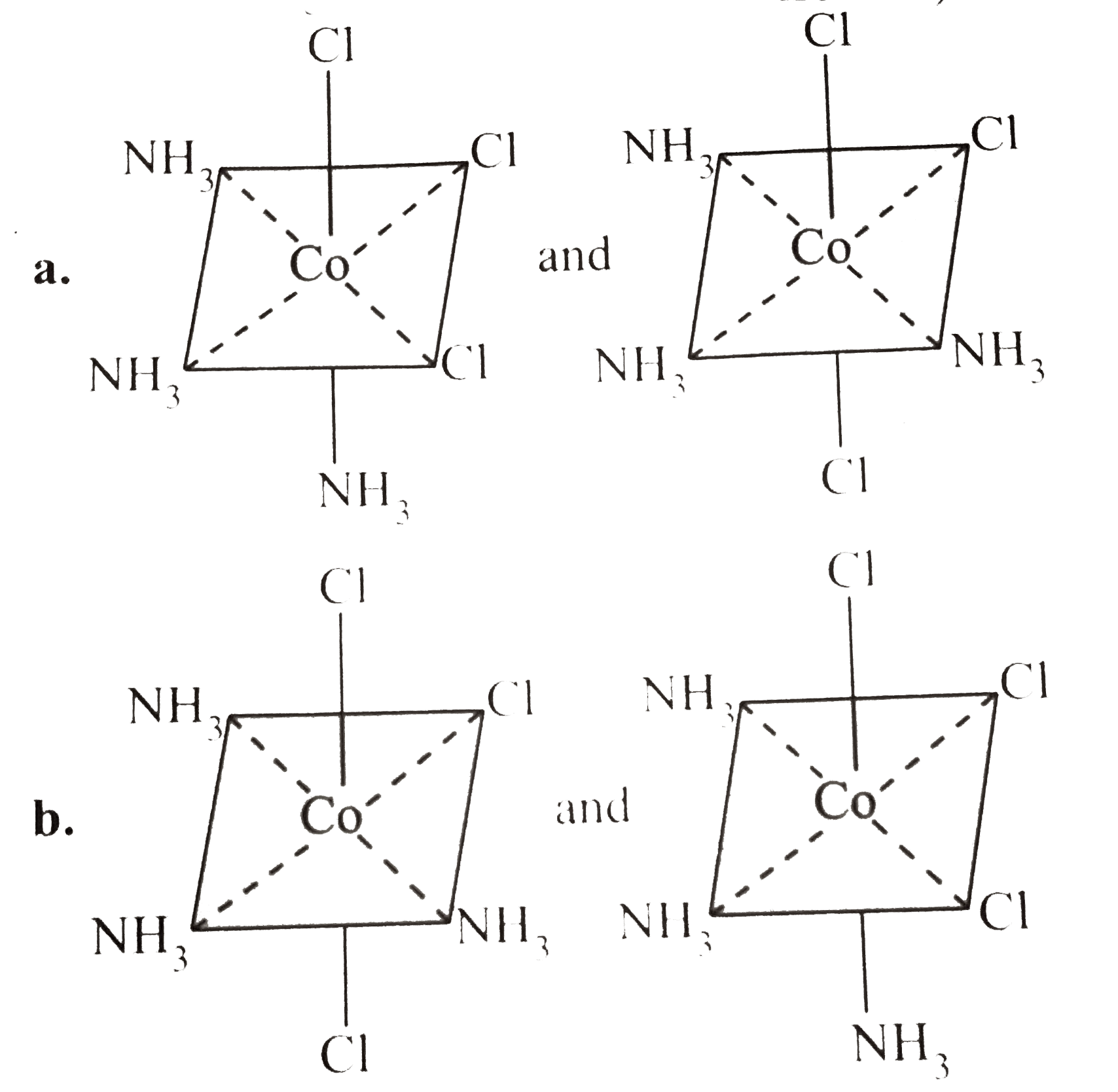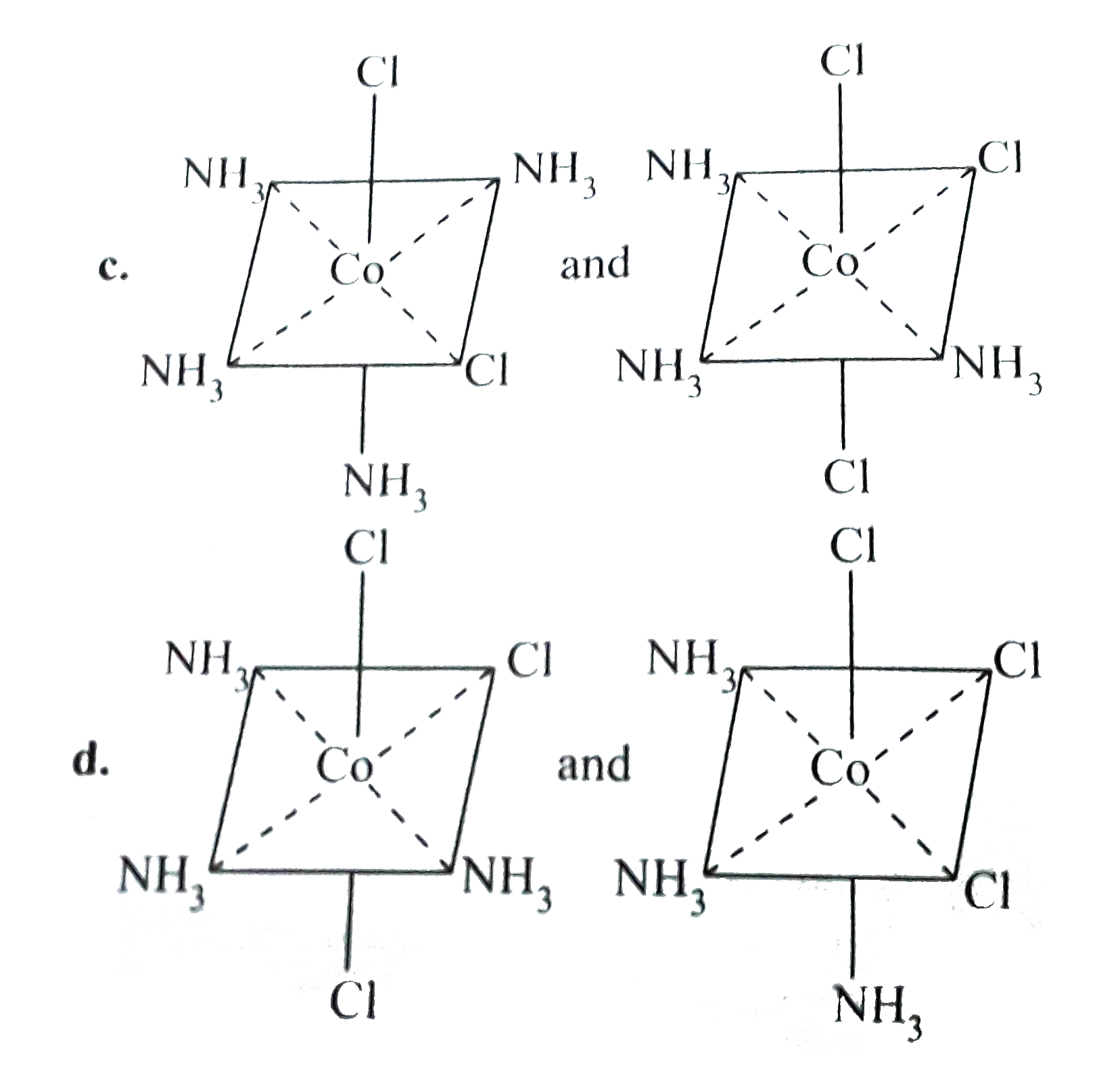The octahedral complex/complex ion which shown both facial and meridional isomers is
triglycinato cobalt (II)
tris (ethylene diamine) cobalt (III)
dichloro diglycinato cobalt (III)
trioxalate cobaltate (III)
The correct Answer is:A
To determine the octahedral complex that shows both facial and meridional isomers, we need to analyze the types of ligands involved and their arrangements around the central metal atom.
1. Understanding Isomers:
- Facial (fac) isomers occur when three identical ligands occupy one face of the octahedron, while meridional (mer) isomers occur when the identical ligands are arranged in a plane that divides the octahedron into two equal halves.
2. Identifying Ligand Types:
- We need a complex where the ligands can be classified into two types: monodentate and bidentate. Monodentate ligands attach through one donor atom, while bidentate ligands attach through two donor atoms.
3. Analyzing the Given Complexes:
- We will analyze the complexes mentioned in the video transcript:
- Triglycinate cobalt(II): Glycinate is a bidentate ligand (can bind through N and O), thus it can form both fac and mer isomers.
- Tris(ethylenediamine) cobalt(III): Ethylenediamine is a bidentate ligand, but since all ligands are the same, it cannot form fac and mer isomers.
- Dichloroglycinate cobalt(III): This complex has both bidentate and monodentate ligands, but the arrangement does not allow for fac and mer isomers.
- Tri-oxalate cobalt(III): Oxalate is also a bidentate ligand, and similar to ethylenediamine, it cannot form fac and mer isomers.
4. Conclusion:
- The only complex that shows both facial and meridional isomers is Triglycinate cobalt(II), as it has the required arrangement of ligands to allow for both types of isomerism.
Final Answer:
The octahedral complex that shows both facial and meridional isomers is Triglycinate cobalt(II).
- Facial (fac) isomers occur when three identical ligands occupy one face of the octahedron, while meridional (mer) isomers occur when the identical ligands are arranged in a plane that divides the octahedron into two equal halves.
- We need a complex where the ligands can be classified into two types: monodentate and bidentate. Monodentate ligands attach through one donor atom, while bidentate ligands attach through two donor atoms.
- We will analyze the complexes mentioned in the video transcript:
- Triglycinate cobalt(II): Glycinate is a bidentate ligand (can bind through N and O), thus it can form both fac and mer isomers.
- Tris(ethylenediamine) cobalt(III): Ethylenediamine is a bidentate ligand, but since all ligands are the same, it cannot form fac and mer isomers.
- Dichloroglycinate cobalt(III): This complex has both bidentate and monodentate ligands, but the arrangement does not allow for fac and mer isomers.
- Tri-oxalate cobalt(III): Oxalate is also a bidentate ligand, and similar to ethylenediamine, it cannot form fac and mer isomers.
- The only complex that shows both facial and meridional isomers is Triglycinate cobalt(II), as it has the required arrangement of ligands to allow for both types of isomerism.
The octahedral complex that shows both facial and meridional isomers is Triglycinate cobalt(II).
Topper's Solved these Questions
Similar Questions
Knowledge Check
Complex ion is shown by
ACuBAgCAuDAll of theseWhich of the following complexes form facial and meridional isomers?
A[Cr(H2O)5CI]+2B[Cr(NH2)5Br]SO4C[Cr(NH3)3(NO2)3]D[Cr(⊗3]3−Which of the following complexes exists in facial and meridional forms?
A[Co(dien)3]3+B[Co(NH3)3Cl3]C[Co(en)3]3+D[Co(gly)3]
Which of the following pairs of structures represent facial and meridional isomers (geometrical isomers) respectively ?

 .
.
View SolutionWhich of the following complex or the complex ion will show geometrical isomerism?
View SolutionWhich of the following pairs of structures represents facial and meridional isomers resectively ?
View SolutionWhich of the following octahedral complexes shown geometrical as well as optical isomerism
View SolutionWhich of the following pairs of structures represents facial and meridional isomers (geometrical iosmers) respectively ?
View Solution
